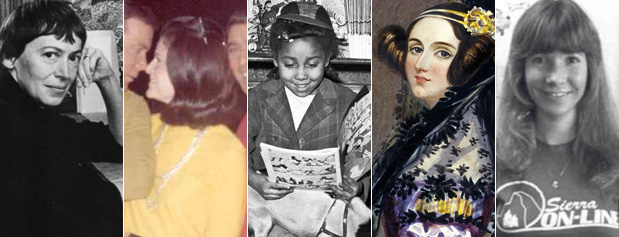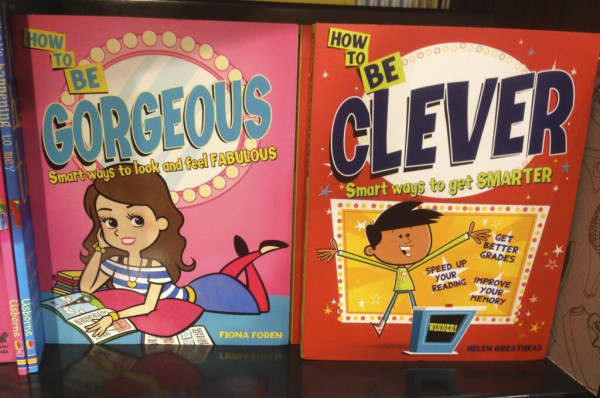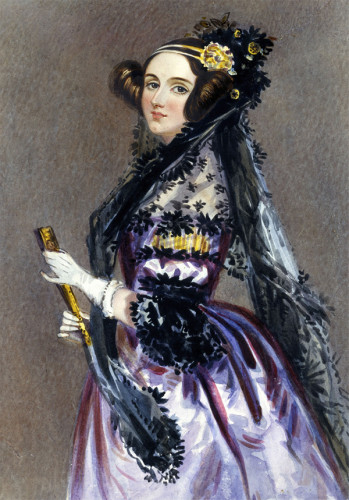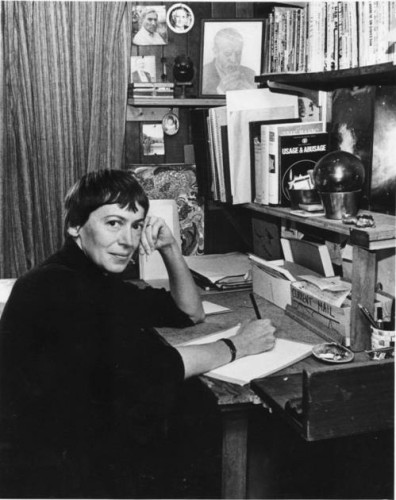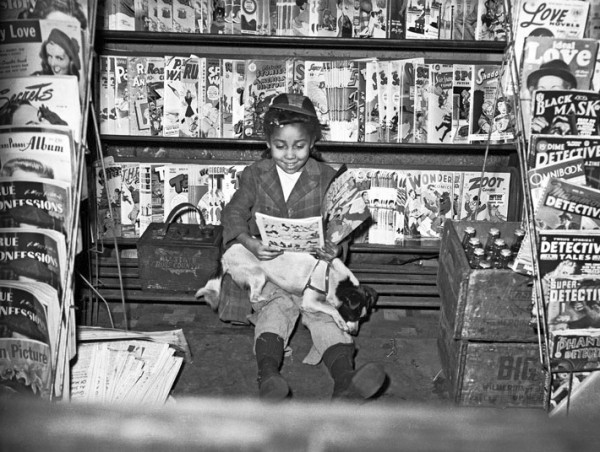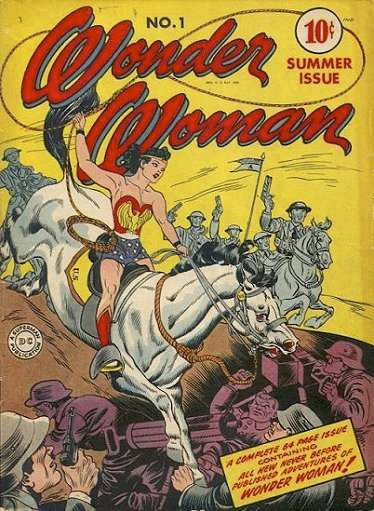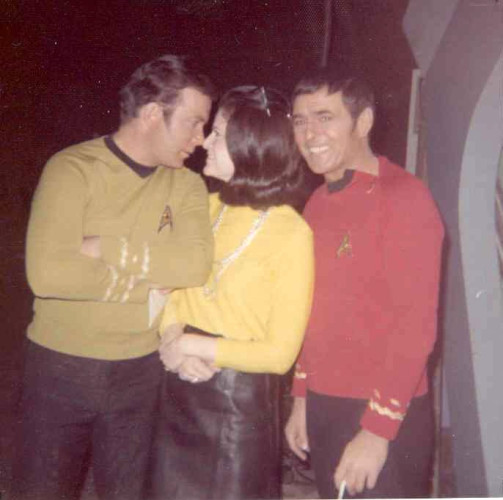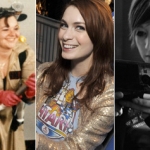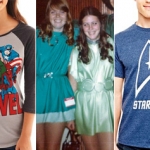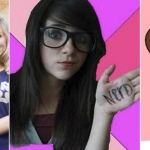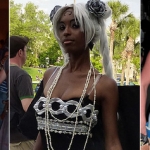In Western culture, certain traits and skills are associated with those categorized as geeks/nerds: high IQ, excellence at math and sciences, devotion to and skill with technology, passion bordering on obsession for certain types of pop culture — comic books, science fiction and fantasy, and playing video games — combined with social awkwardness. Western society prefers everyone fit into a “standard” form. Certain characteristics have been assigned to particular groups.
Besides deciding societal group, Western thought also divides these characteristics into gender groups. According to the stereotypical view, the traits that lead to one being labeled geek or nerd by the larger culture are also seen as “masculine” more than “feminine” traits. The viewpoint of the culture has become that since geek/nerd characteristics are masculine, the geek/nerd culture must be dominated by males. Western society associates social skill prowess, emotions, dependence, lacking intensive focus, and a non-interest in technology with “feminine” traits. Reason and emotion are divided. Reason is associated with a masculine viewpoint and emotion is associated with a feminine viewpoint.
When this standardization of gender roles is passed off as natural, it eventually becomes the belief of a society. Singlemindedness, competitiveness, rational thought and empirical knowledge, entrepreneurship, and being capable and driven are seen as positive traits in men and negative traits in women. This gender bias and separation of roles begins early in childhood: “boy” toys — sports equipment, action figures and vehicles — vs. “girl” toys — hair and makeup sets, dolls and kitchen sets. Because of this push toward gender defining as a society, even geek culture has been affected and influenced. Instead of creating a new and equal partnership of male and female scientists, engineers, computer programmers, and content creators, it has re-envisioned old notions of male/female roles in a new packaging. Mainstream culture reinforces these notions.
A belief exists in mainstream culture that the vast majority of geeks/nerds are male. It’s supported by the industries that depend on the geek/nerd audience to buy their products. The majority of geeky merchandise marketing is aimed exclusively at the male portion of the audience. Many products — T-shirts, shoes, collectibles — have no female-marketed equivalent. Over the years, this line of thought has spilled into the geek culture itself. A large section of the male geeks/nerds have bought into the male-dominated hype. This sort of thinking has led directly to the mysterious and mythical creature dubbed the “Fake Geek Girl”.
In reality and in history, we Geek/Nerd Gals have been around for a long while, before geek or nerd was a recognized social group. The influence of women on the development of geek culture has been powerful. In fact, several beloved, iconic fandoms and characters would not exist without the determination and perseverance of a geek/nerd pioneer woman.
The paths blazed by women geeks go all the way back to the 1800s and 1900s with the likes of Ada Lovelace and Marie Curie. Both women bucked the societal norms for women of their time, and contributed to the foundations of modern math and science. Ada Lovelace was a mathematician who worked with Charles Babbage. She translated an account of the Analytical Engine along with “notes” that essentially was considered the first “computer program” that described how to use the Engine. Noted physicist and chemist Marie Curie was the first recipient of the Nobel Prize for Physics. She was the first person to win the Award twice.
Not only have many other women made significant early contributions to science, every field that has become associated with geek culture has experienced important forward progress through the efforts of women.
Female Inventors and Scientists:
- Anna Jane Harrison was the first woman president of the American Chemical Society. In 1940, she was the first woman to earn a PhD from the University of Missouri.
- Allene Rosalind Jones was a pioneering researcher who held several patents.
- Hedy Lamarr, besides being an actress, co-invented the early process of spread spectrum communications, which uses frequency hopping to prevent interference among wireless communications.
Female Science Fiction/Fantasy Authors:
- Murasaki Shikibu wrote The Tale of Genji, widely accepted as the first novel, around 1021 AD.
- Baroness Emma Orczy’s The Scarlet Pimpernel originated the “hero with a secret identity” archetype.
- Mary Shelley’s Frankenstein is considered one of the first sci fi novels.
- Catherine Lucille Moore, better known as C.L. Moore, wrote the early Jirel of Joiry female sword and sorcery fantasy series, the first to feature a female protagonist.
- Ursula K. Le Guin’s 1969 The Left Hand of Darkness transformed the genre. Until that book, most science fiction was written for, by, and about white men.
- Madeleine L’Engle’s popular A Wrinkle in Time (1962) and its sequels were an inspiring entry point into the science fiction/fantasy genre for many young female fans.
- Anne McCaffrey showed that quality science fiction/fantasy could have appeal to women and strong female characters with the Dragonriders of Pern series. Her novels helped transform the way genre authors wrote about women. The Ship Who Sang changed the way all of us thought about the definition of bodies and selfhood. McCaffrey was the first woman to win both the Hugo and Nebula Awards as well as being named a Grand Master of science fiction.
Female Portrayals in Comic Books:
- The Golden Age (1930s-1940s) is when women first appeared in comic books. Archetypes were the first female comic book characters: The Career Girl, a lone woman with a successful career filling in a husband’s job while he was off fighting and taking care of her children (WWII influence); the Romantic Good Girl/Bad Girl; the Spunky Teenager.
- Fantomah was the first known female superhero, created by writer/artist Fletcher Hanks in 1940. Fantomah was an immortal Egyptian woman who could turn into a skull-faced creature that fought evil with her superpowers.
- Wonder Woman was created in this time period by William Moulton Marston, with much input into the character from his wife, Elizabeth. They created the character because they wanted girls to have a positive female role model in comic books. They intended her to have not only the allure of an attractive woman, but also the strength of character associated with a man — self-assertive with natural leadership skills, but still loving.
- The Silver Age (1950s-1970s) ushered in a tide turn for comic books that would affect women characters and women artists/writers in the industry.
- The Comic Code was established in 1954 by the Comics Magazine Association of America. As an alternative to government regulation, the Code allowed publishers to self-regulate comic book content in the U.S. In the early 1960s, DC added its own code about women characters. The inclusion of females was discouraged. When female characters were used, they were to be secondary in importance.
- Lois Lane, while fitting the career girl archetype, is a prime example of women characters in this era. Like Lois to Clark Kent, females always had a supporting role and connection to the superhero and his alter ego.
- Wonder Woman remained a popular role model, but was mostly used to support the male characters around her, even though she is the third most popular DC superhero behind only Batman and Superman.
- Villains were the only powerful female characters of this era.
- “Girl” as a suffix for superhero names denotes the attitude of most comic book publishers toward women: Batgirl, Supergirl, Invisible Girl.
- The “Marvel Revolution” of the early 1960s marked the point of marketing comic books almost exclusively for teenage boys. The focus shifted to action stories with male heroes and physically idealized women, a combination which set the foundation for the idea of male-dominated geekdom.
Female Influence on Media:
- Betty Jo “Bjo” Trimble was one of the main driving forces behind the formation of the Star Trek fandom. Along with her husband, John, she devised the grassroots letter-writing campaign, “Save Star Trek”, that resulted in the show’s renewal for a third season. She and her husband also teamed to campaign to have NASA’s first Space Shuttle named the Enterprise. She authored the first encyclopedic collection of data for the franchise, the Star Trek Concordance.
- Joan Winston was one of the main organizers of the 1972 Star Trek convention, considered by many to be the birthplace of the “Trekkie/Trekker” fandom. The majority of the convention attendees were female. In the early years of the fandom, women made up the large majority of fan club administrators, fanfic authors, and fanzine editors.
- Lucille Ball was instrumental in the pick-up of Star Trek as a series. Without the support of such an influential actress/producer, the series may have never aired.
- Verity Lambert was the youngest and only female producer at the BBC in the early 1960s. One early project that had her complete support was a children’s show featuring a scientist time traveler. Because of her unwillingness to give up on the project, she became the founding producer and the reason Doctor Who made it onto the television screen in 1963. Against opposition, she fought for the inclusion of the Daleks in the show.
- Delia Derbyshire arranged and mixed the Doctor Who theme song.
Females Crucial to Video Games:
- Roberta Williams designed the first graphical computer adventure game, Mystery House, and the highly popular King’s Quest series.
- Dona Bailey was the first woman to design an arcade game, the classic Centipede.
- Carol Shaw was the first woman to program and design a video game in 1978, 3D Tic Tac Toe for the Atari 2600.
- Doris Self was one of the first and highly successful female video game competitors. In the 1983 Video Games Masters Tournament, she scored 1,112, 300 points on Q*bert, a record that stood unbroken for several years.
- Metroid was released by Nintendo in the summer of 1986. It was the first video game that featured a female main hero. However, this fact was only revealed after one had beaten the game. While it may not seem spectacular nowadays, Metroid was the first video game where a woman did the saving instead of waiting to be saved. It was an indication that the struggle and influence of women was having a noticeable effect on early geek culture.
Numerous women played significant roles in the development of new sciences and new technologies, more than space in the article allows to mention. A generation of girls noticed, admired, and adopted these women as their role models for career paths. A generation of girls realized it’s okay to identify as a geek/nerd. Now, that generation of girls have grown up and are having their own influence on geekdom. It’s not the world of the “Fake Geek Girl”. It’s the world of the Modern Geek Woman, who feels free to exhibit and revel in her geek-ness. It’s Geek Girl Power on full display.


